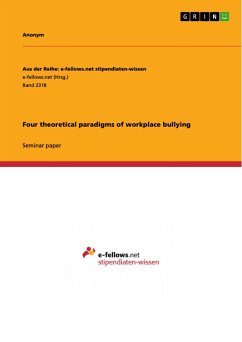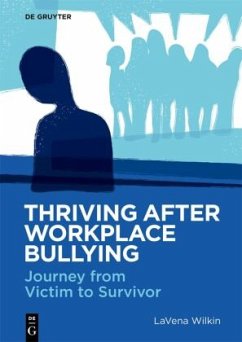
Four theoretical paradigms of workplace bullying

PAYBACK Punkte
0 °P sammeln!
Seminar paper from the year 2014 in the subject Leadership and Human Resource Management - Miscellaneous, grade: 2,0, University of Innsbruck, language: English, abstract: In this paper I will discuss the characteristics of the four theoretical paradigms of workplace bullying after Samnani (2013) and make an analysis of their strengths and weaknesses. According to Bratton and Gold, workplace bullying is defined as a personalized attack from one employee to another employee that takes place on a constant basis for a certain time using emotionally threatening behaviors. As a result the employee'...
Seminar paper from the year 2014 in the subject Leadership and Human Resource Management - Miscellaneous, grade: 2,0, University of Innsbruck, language: English, abstract: In this paper I will discuss the characteristics of the four theoretical paradigms of workplace bullying after Samnani (2013) and make an analysis of their strengths and weaknesses. According to Bratton and Gold, workplace bullying is defined as a personalized attack from one employee to another employee that takes place on a constant basis for a certain time using emotionally threatening behaviors. As a result the employee's self-esteem, self-confidence and work-competence could be injured. Moreover, the imbalance of power between perpetrator and victim needs to be considered. Workplace bullying needs to be taken as a serious issue since its effects are not only limited to the performance of the people involved but also to the whole organization. The four theoretical paradigms, as mentioned by Samnani, are: Functionalism, Interpretivism, Critical Management Theory, and Postmodernism. They differ in causes of workplace bullying, philosophical beliefs, and implications. There are three major areas in workplace bullying literature: One is the mostly qualitative measured prevalence rate of workplace bullying in a country, organization or industry. Secondly there are identifying antecedents of workplace bullying, and last of all the physical, psychological and work-related consequences for the bullying victim of workplace bullying. For brevity's sake the focus of this reflection paper will be on the antecedents of bullying.













